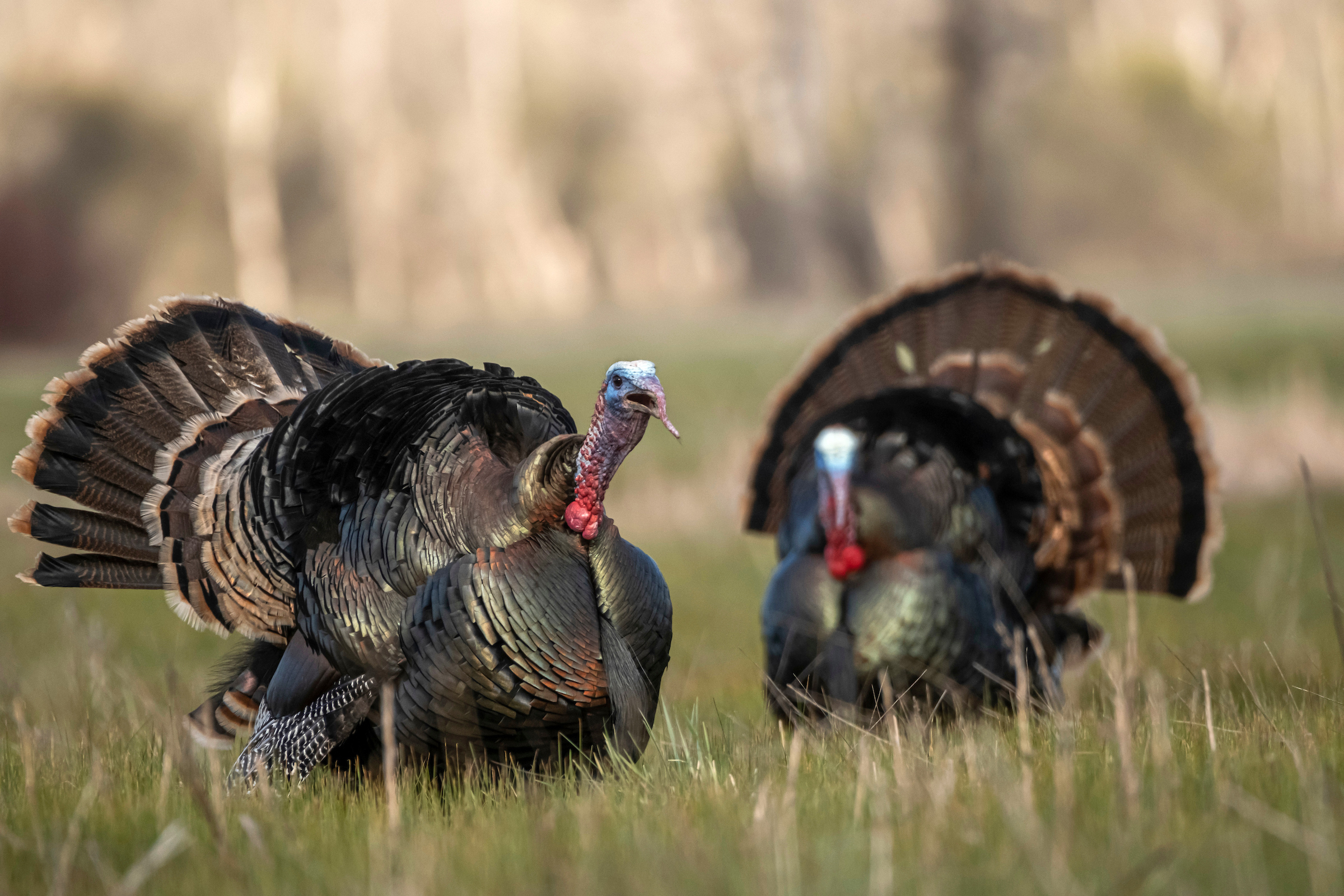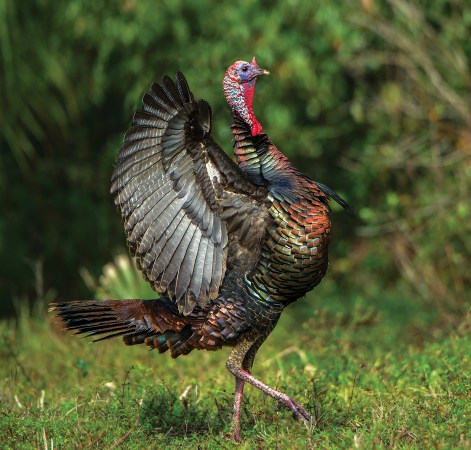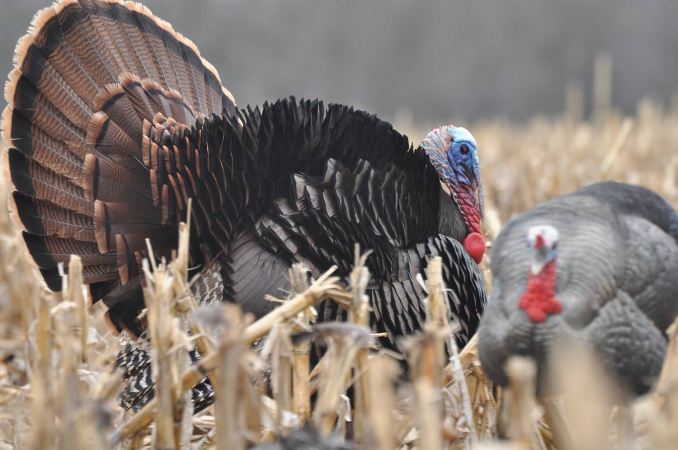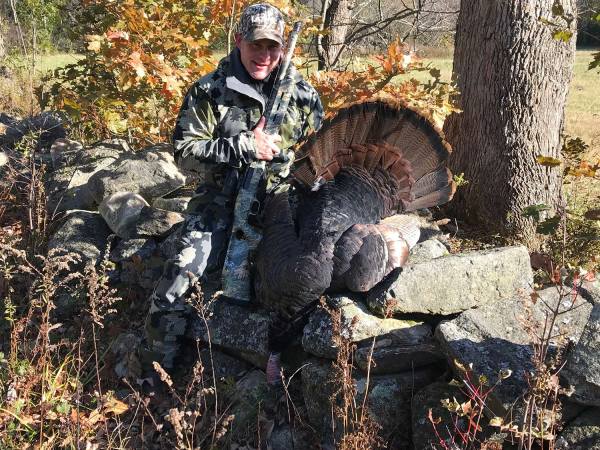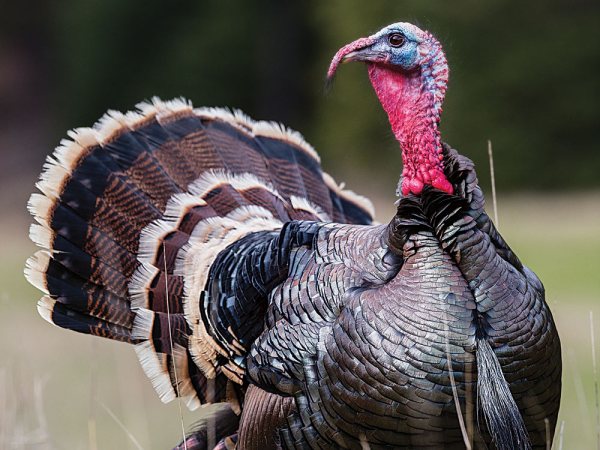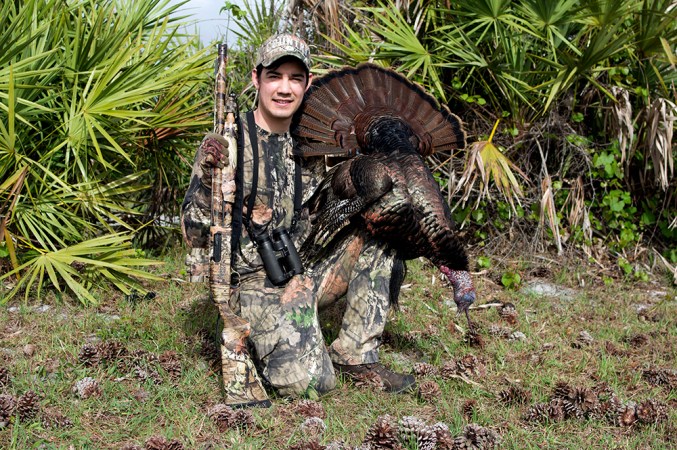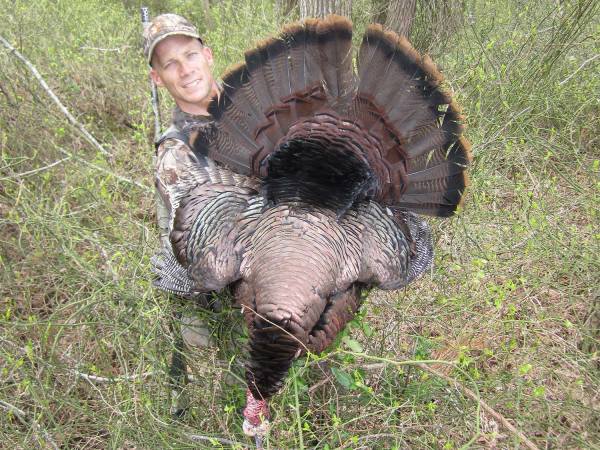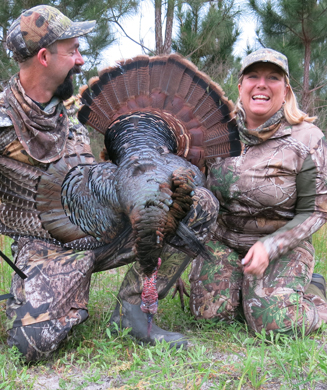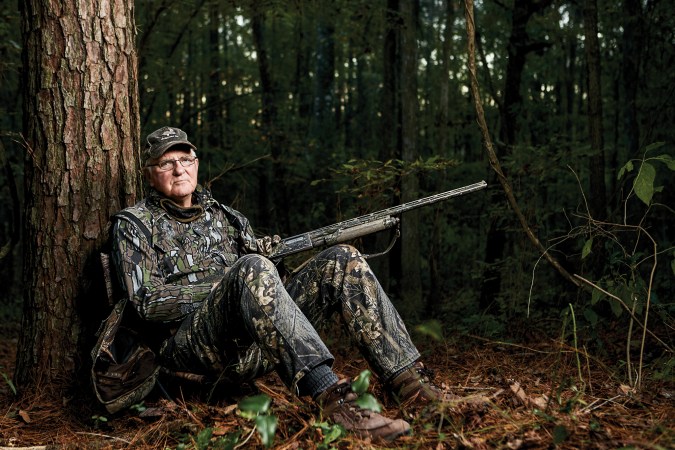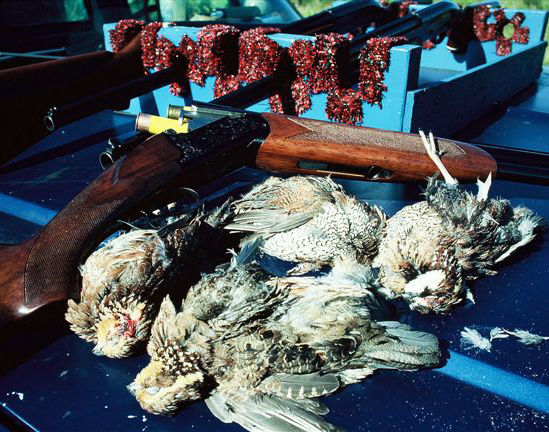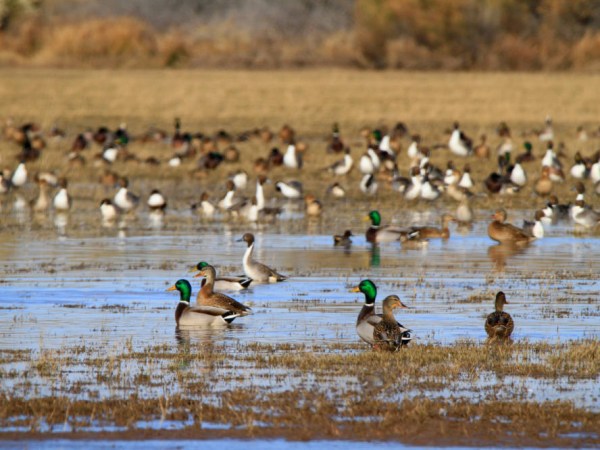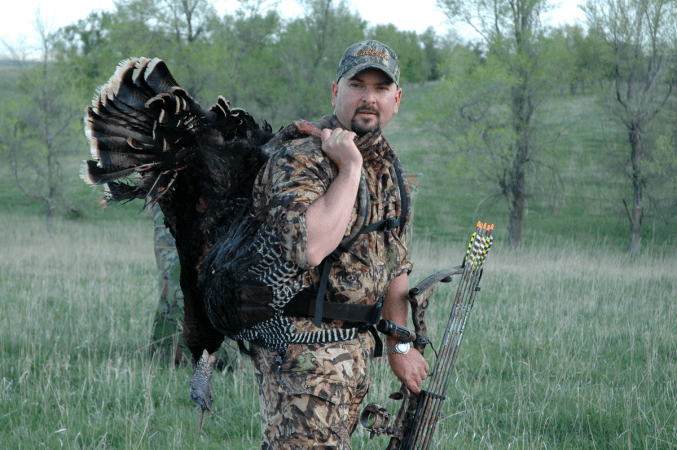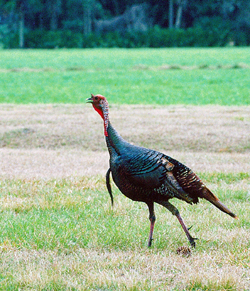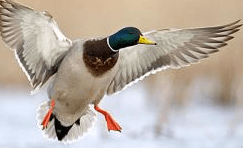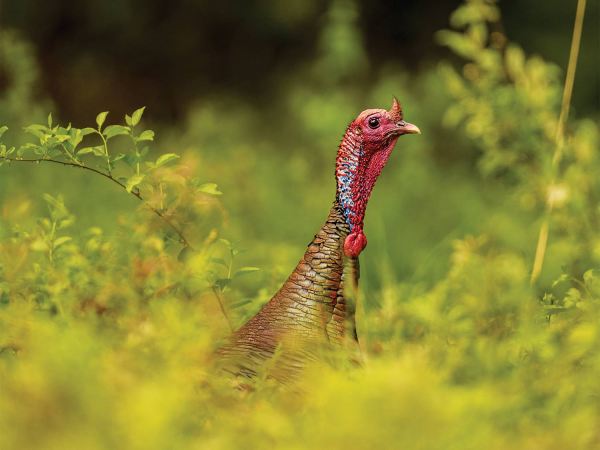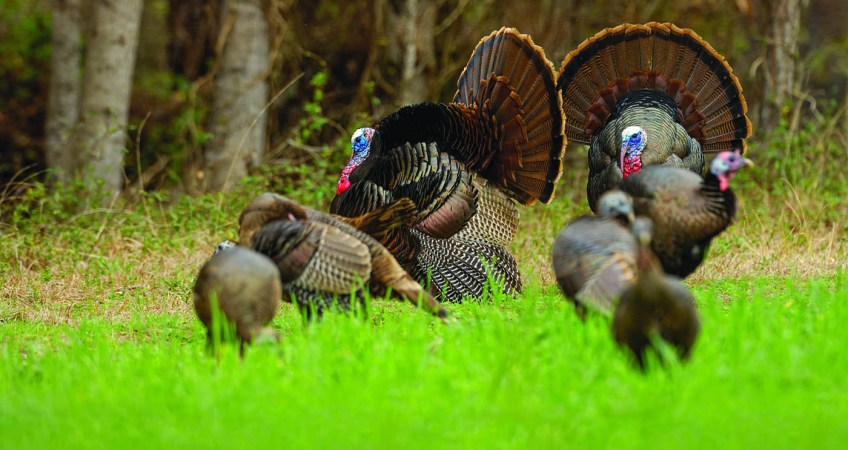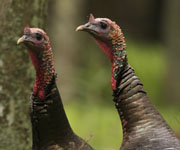Forget the pandemic, politics, and all the other bad news that seemingly dominates our lives. A quick look at the calendar confirms that spring turkey season is just months—and in some cases, weeks—away.
And despite tales of doom and gloom from some corners of turkey country, opportunities to pursue America’s top game bird abound from coast to coast. Take your pick: thundering Easterns on a timbered ridge, reclusive Osceolas in a Florida cypress head, roaming Rio Grandes cruising a vast mesquite flat, or white-tipped Merriam’s high in the mountains. You can visit some destinations on a whim. Simply show up, buy a tag, and hunt. Other locations require more prep work. That’s why we contacted turkey biologists from across the country to help you plan your 2022 season.
But the bottom line remains: You’d better start planning, because spring will be here soon, and the gobblers won’t wait.
Alabama, Arizona, Arkansas, California, Colorado, Connecticut, Delaware, Florida, Georgia, Hawaii, Idaho, Illinois, Indiana, Iowa, Kansas, Kentucky, Louisiana, Maine, Maryland, Massachusetts, Michigan, Minnesota, Mississippi, Missouri, Montana, Nebraska, Nevada, New Hampshire, New Jersey, New Mexico, New York, North Carolina, North Dakota, Ohio, Oklahoma, Oregon, Pennsylvania, Rhode Island, South Carolina, South Dakota, Tennessee, Texas, Utah, Vermont, Virginia, Washington, West Virginia, Wisconsin, Wyoming
Alabama
Subspecies: Eastern
Estimated population: Not available
Spring 2021 harvest: 57,567 (post-season Responsive Management Survey estimate)
Overall outlook: Steven Mitchell, upland game-bird program coordinator for the Alabama Department of Conservation and Natural Resources, said the estimated number of spring hunters was up in 2020 and 2021, likely because of COVID-19. The spring 2021 hunter estimate decreased by about 4 percent, but the harvest declined by about 30 percent, which raised some concerns for the spring 2022 season. However, jake observations increased in 2021, and Mitchell said he hoped that would translate into more 2-year-old birds in 2022.
Potential spring 2022 hotspots: “Some of the better poult production in 2020 was observed in the piedmont and southwestern Appalachian regions of northeastern Alabama, so those areas may be promising in 2022 for full-fanned gobblers,” says Mitchell.
Quick tip: Mitchell reminded hunters that new regulations are in effect for the spring 2022 season. The season opens March 25 on private land, and there’s a combined four-gobbler limit for the fall and spring seasons (in counties with a fall season). Hunters are limited to one bird per day, and decoys are not allowed the first 10 days of the season.
Season dates and bag limits available here.
Arizona
Subspecies: Merriam’s, Gould’s, Rio Grande
Estimated population: Not available
Spring 2021 harvest: 884
Overall outlook: “Gould’s and Rios should provide good hunts with the limited number of tags for each subspecie,” says Rick Langley, wildlife program manager with the Arizona Game and Fish Department. “Merriam’s might be tough coming out of two consecutive drought years and limited poult recruitment.”
Potential spring 2022 hotspots: Langley says units 1 and 27 in eastern Arizona remain promising. Permits were cut on the North Kaibab (Unit 12A). Units in the central part of the state (17A, 17B and 20A) have low permit numbers but are recovering and offer some quality hunting opportunities.
Quick tip: “Scout, and don’t plan on hitting it for just the first weekend,” says Langley. “Our spring hunts are notorious for having wind and weather, so plan around having tough weather days.”
Season dates and bag limits available here.
Arkansas
Subspecies: Eastern
Estimated population: 80,000 to 100,000
Spring 2021 harvest: 7,013
Overall outlook: Jeremy Wood, turkey program coordinator for the Arkansas Game and Fish Commission, says hunters should see some improvement for the spring 2022 season. The 2021 spring harvest was down significantly, likely because of an increase in pressure and harvest in 2020—attributed to COVID—and because Arkansas experienced four of the five lowest recorded years of reproductive success from 2015 through 2019. Reproductive indices in 2020 and 2021 were the highest since 2012 and 2013, and anecdotal reports this past spring and summer indicate good numbers of juvenile males, which should translate into more gobblers for spring 2022.
Potential spring 2022 hotspots: “The Gulf Coastal Plain ecoregion in southwestern and south-central Arkansas has seen the highest reproductive estimates in the state over the past several years,” says Wood. “I anticipate this area to see increasing trends in harvest during the spring 2022 and 2023 seasons. The Delta ecoregion saw substantial summertime flooding during late spring and early summer in recent years. As such, I anticipate harvest to be down slightly in this region during the 2021 season. Reproduction improved in 2020 and again in 2021, which should result in improved populations in subsequent springs.”
Quick tip: “Have patience, and be still,” says Wood. “Just because a gobbler isn’t being vocal doesn’t mean he can’t hear you call or isn’t slowly working his way into your position.”
Season dates and bag limits available here.
California
Subspecies: MostlyRio Grandes, with some Merriam’s, Easterns and Eastern/Rio Grande hybrids.
Estimated population: 250,000
Spring 2021 harvest: About 20,795 birds
Overall outlook: Matt Meshriy, environmental scientist with the California Department of Fish and Wildlife’s Upland Game Program, says conditions should be good for spring 2022, but hunters should expect habitat to have been affected by recent fires.
Potential spring 2022 hotspots: Low-elevation national forests and areas along major rivers in the Central Valley hold lots of turkeys. Los Padres, Mendocino, Shasta and Trinity national forests, and those in the Sierra and Cascade ranges, have turkeys at lower elevations, although areas of the Sierra/Cascade have been affected by fire. Birds along riparian areas in the Central Valley might have suffered from extreme drought, and anecdotal information suggests lower recruitment in 2021. Opportunities should still be good in areas with annual water resources.
Quick tip: “The Dixie, Caldor and Monument fires and the River Complex will have changed the resource landscape for turkeys, so scout early in those impacted foothill and mountain areas.”
Season dates and bag limits available here.
Colorado
Subspecies: Merriam’s, Rio Grandes
Estimated population: 30,000 to 35,000
Spring 2021 harvest: About 5,700 birds
Overall outlook: “[This] should be a decent season,” says Ed T. Gorman, small-game manager for Colorado Parks and Wildlife. “Winter is still largely ahead of us, so we don’t really know what is to come in the next few months. A significant percentage of the state was very dry over the summer brooding period, which could certainly have some localized effects on poult recruitment. That being said, we haven’t really seen those impacts across a large scale during dry years in the past. Bottom line, turkeys are doing very well in Colorado and have been for a number of years.”
Potential spring 2022 hotspots: Gorman adds that hunters can determine traditionally productive areas or counties by studying several years of harvest reports here.
Quick tip: “Merriam’s wild turkeys commonly move around the landscape as the season progresses, and scouting can help a hunter figure out where they are likely to move.”
Season dates and bag limits available here.
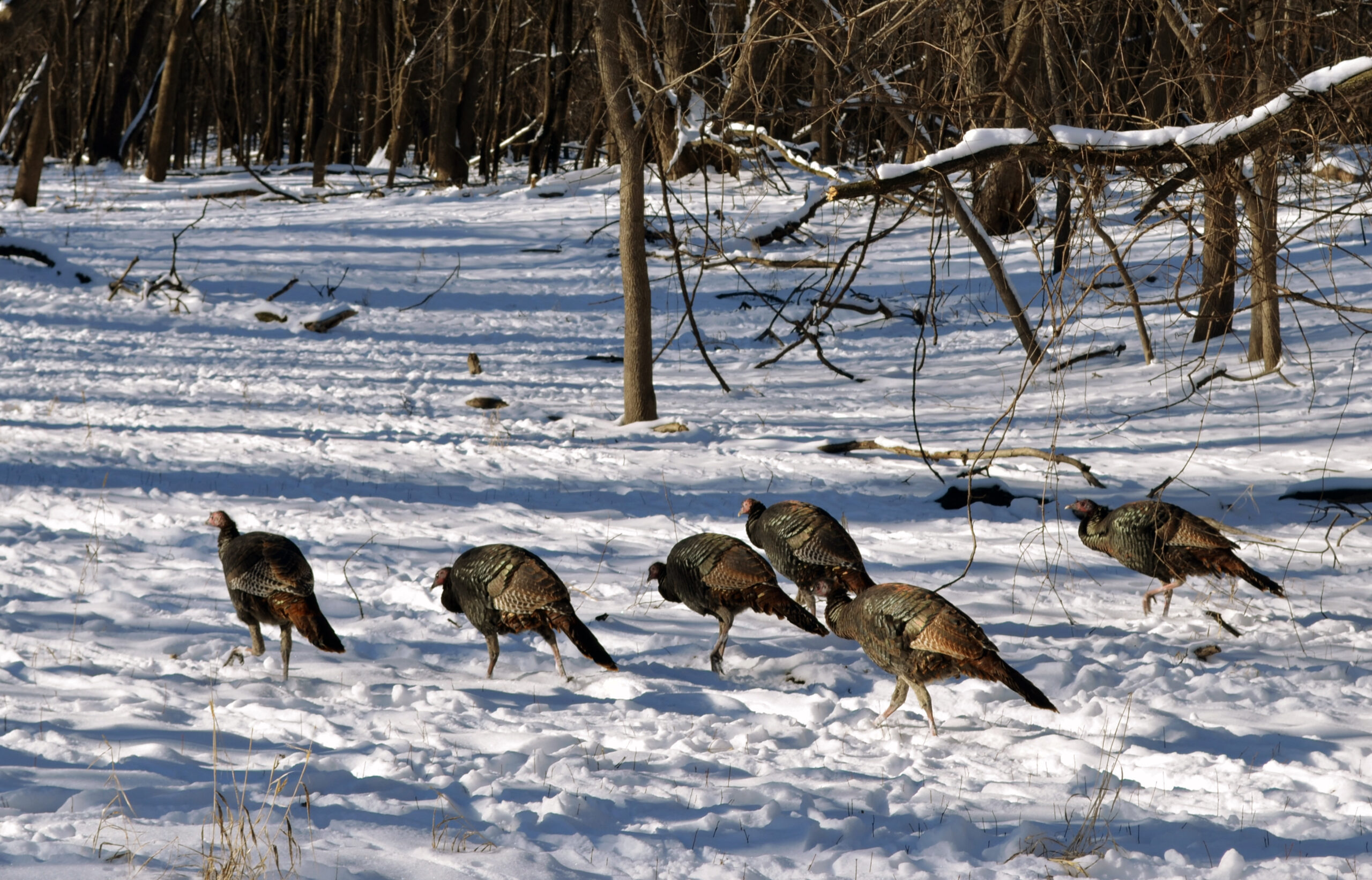
Connecticut
Subspecies: Eastern
Estimated population: Not available
Spring 2021 harvest: 1,247
Overall outlook: Michael Gregonis, wild turkey program biologist with the Connecticut Department of Energy and Environmental Protection, says that the state’s turkey population seems to have been decreasing since the mid-2000s. The 2021 brood survey index suggests that annual productivity was fair. Hunters can still find pockets of gobblers throughout the state, but they might have to hunt a bit harder to locate birds in spring 2022.
Potential spring 2022 hotspots: Gregonis says that the northwestern and northeastern corners of the state continue to be the most productive areas.
Quick tip: “Scout multiple … locations prior to opening day,” adds Gregonis. “This is particularly important for public-land hunters, as Connecticut’s public land gets a lot of hunting pressure.”
Season dates and bag limits available here.
Delaware
Subspecies: Eastern
Estimated population: 6,000
Spring 2021 harvest: Not available; 643 in 2020
Overall outlook: Delaware’s annual turkey productivity surveys indicated fair to poor production in 2020. The average harvest from 2016 to 2020 was about 650 birds.
Potential spring 2022 hotspots: Western Kent and northwestern Sussex counties typically provide the best opportunities to harvest a bird.
Quick tip: Hunters must obtain a permit to hunt turkeys on public lands. You cannot hunt state forests and state wildlife areas in the same season.
Season dates and bag limits available here.
Florida
Subspecies: Osceola, Eastern, intergrade
Estimated population: Not available
Spring 2021 harvest: 13,007
Overall outlook: Buddy Welch, wild turkey management program coordinator for the Florida Fish and Wildlife Conservation Commission’s Division of Hunting and Game Management, expects the spring 2022 season to be similar to the spring 2021 hunt.
Potential spring 2022 hotspots: Welch says hunters can learn more about turkey abundance, distribution, and the quality of habitat throughout the state by using the FWC’s new map, which shows the predicted quality of habitat based on the location, amount, and arrangement of habitat turkeys need throughout their home range and life cycle.
“This new map, combined with the habitat suitability model, enables wild turkey hunters to drill down to an area smaller than two basketball courts to get a better understanding of the likelihood of wild turkeys occurring in a particular area,” he said.
Quick tip: “Be patient, as birds in Florida may not gobble as much as what hunters in other regions are used to,” says Welch. “When hunting spring turkeys in Florida, expect it to be warm and wet. Lightweight clothing, waterproof boots, and insect repellent are recommended.”
Season dates and bag limits available here.
Georgia
Subspecies: Eastern
Estimated population: Not available
Spring 2021 harvest: 18,192
Overall outlook: “The outlook for the spring 2022 turkey population will be fair, based on poult production estimates from 2020,” says Emily Rushton, state wild turkey biologist for the Georgia Department of Natural Resources. “Statewide poult production was slightly below average, and harvest generally tracks poult production from two years prior, as these poults are entering the adult population. Harvest may look different this spring as well since significant changes to statewide turkey regulations will take effect for the 2022 season.”
Potential spring 2022 hotspots: Rushton says that the Piedmont and Upper Coastal Plain regions in central Georgia did not experience a production decrease two years ago, so hunters in those regions might see more turkeys this spring. The mountains, however, experienced low production in 2020, which might translate into fewer birds.
Quick tip: Rushton adds that hunters should double-check regulations to ensure they’re up to speed about new season dates and bag limits.
Season dates and bag limits available here.
Hawaii
Subspecies: Rio Grande
Estimated population: Not available
Spring 2021 harvest: Not available
Overall outlook: The Big Island has a good turkey population and remains a popular March destination for traveling hunters.
Potential spring 2022 hotspots: In 2021, data from the Hawai’i’s public hunting areas, Mauna Kea and Pu’u Wa’awa’a, indicated a reversal in previously diminishing hunter success.
Quick tip: Hunters might want to consider using a four-wheel-drive vehicle. Also, they can call the Hawaii Island Division of Fish and Wildlife office at (808) 974-4221 for special information and updated maps. The office can provide localized information about turkey hunting.
Season dates and bag limits available here.
Idaho
Subspecies: Primarily Merriam’s, with some Easterns and Rio Grandes.
“However, due to mixing, and trapping and translocation efforts statewide, there are likely no pure subspecies in Idaho,” says Jeffrey M. Knetter, upland-game and migratory game-bird coordinator for the Idaho Department of Fish and Game. “In some places, a given bird may display characteristics of each subspecies. I like to refer to them as Idaho mountain turkeys.”
Estimated population: 30,000
Spring 2021 harvest: About 7,000 in 2020
Overall outlook: Turkeys have taken off in Idaho since being reintroduced in the 1960s, and with millions of acres open to the public, the state offers excellent spring hunting opportunities.
Potential spring 2022 hotspots: Harvests are highest in the state’s Panhandle, Clearwater, Southwest, and Southeast regions.
Quick tip: Idaho turkeys often concentrate in relatively low-elevation forests and along narrow riparian areas.
Season dates and bag limits available here.
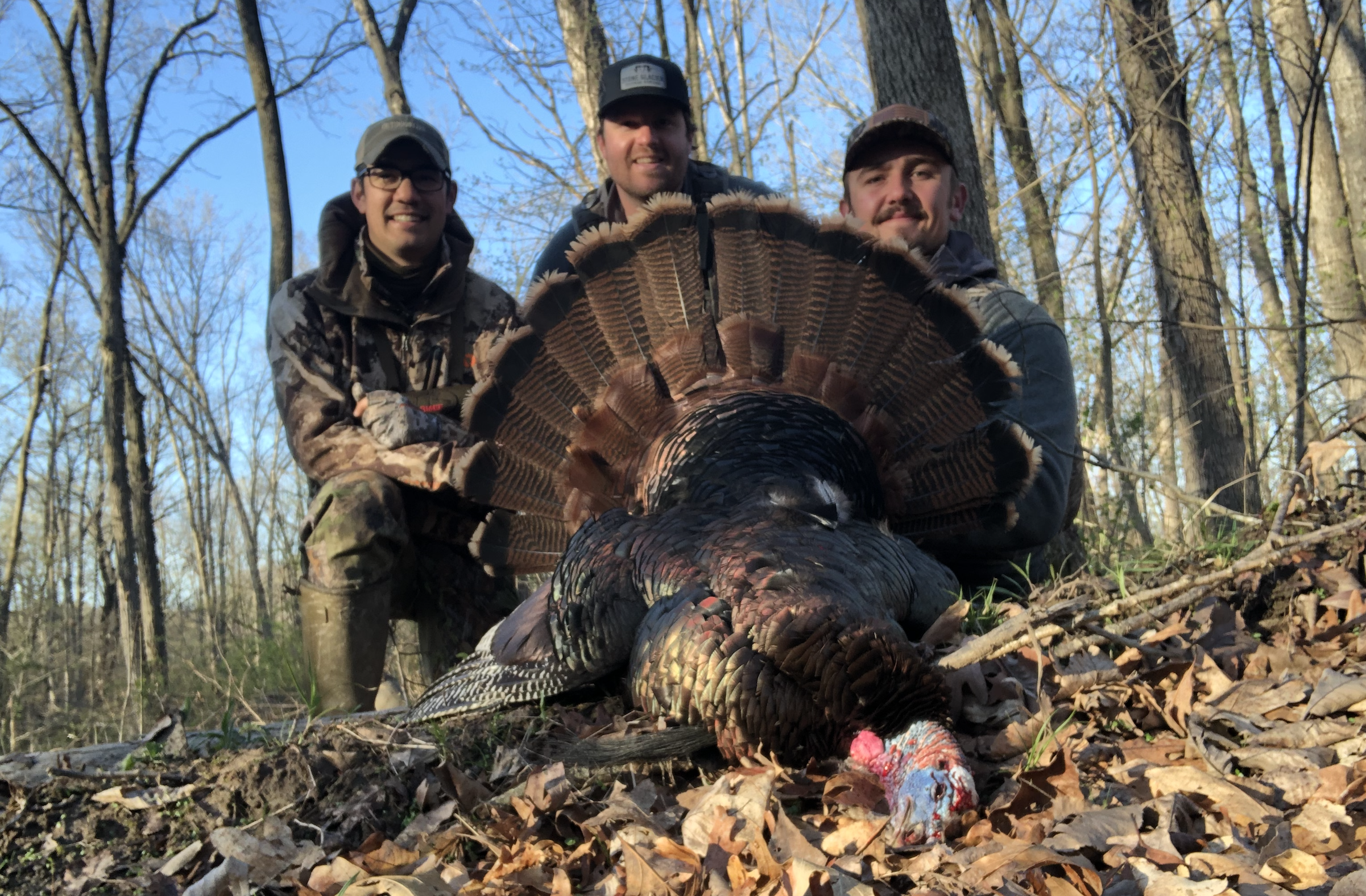
Illinois
Subspecies: Eastern
Estimated population: Not available
Spring 2021 harvest: 13,613
Overall outlook: “Looking ahead to the spring 2022 season, there are reasons to be optimistic,” says Luke Garver, wild turkey project manager for the Illinois Department of Natural Resources. “We saw reproductive success increase for the second year in a row … All of the known variables point toward a good season in 2022, and it’s reasonable to assume harvest totals will fall somewhere between the 2020 and 2021 totals.”
Potential spring 2022 hotspots: Garver says several eastern Illinois counties along the Indiana border experienced the periodical cicada hatch and reported above-average reproductive success, according to the state brood survey. That might result in higher numbers of jakes and 2-year-old gobblers compared to previous years.
Quick tip: Garver adds that hunters should visit huntillinois.org to find info on season dates, specific site rules and regulation changes, and use the Hunt Planner and Hunt Map to dial in specific hunts.
Season dates and bag limits available here.
Indiana
Subspecies: Eastern
Estimated population: 130,000 to 140,000
Spring 2021 harvest: 12,320
Overall outlook: Steven E. Backs, wildlife research biologist with the Indiana Department of Natural Resources, believes that the spring 2022 harvest should hold steady at about 12,000 to 13,000 birds, but might increase because of exceptional 2021 production, which could result in more jakes in the harvest.
Potential spring 2022 hotspots: “Prior to summer 2021, some areas of the southern half of the state had a decade or more of subpar production, and that was having a negative effect on turkey populations, spring harvests and hunter success,” says Backs. “The uptick of 2021 summer production was a much-needed boost for our turkey populations, though one year of increased production will not resolve a decade or more of poor production. Overall, there are no regions that appear to be notably more promising than others, but we expect a slight improvement in the harvest for the southern half of the state.”
Quick tip: Backs adds that winter flocks have usually broken up by late March or early April, and he advised hunters to scout then.
Season dates and bag limits available here.
Iowa
Subspecies: Eastern
Estimated population: 120,000
Spring 2021 harvest: Not available
Overall outlook: Jim Coffey, forest wildlife biologist with the Iowa Department of Natural Resources, says the spring 2022 season is expected to be consistent with the state’s five-year trend. However, poor production the past couple of years might result in less gobbling and fewer 2- to 3-year-old birds in some areas.
Potential spring 2022 hotspots: “Turkeys are harvested consistently in 98 of Iowa’s 99 counties,” says Coffey. “Much activity is centered around areas of good forested cover. In recent years, we have seen a reduction in population and harvest in the southeastern counties. Northeastern Iowa provides plenty of birds and ample public ground for traveling turkey hunters.”
Quick tip: Coffey adds that hunters can help biologists by participating in summer turkey counts.
Season dates and bag limits available here.
Kansas
Subspecies: Eastern, Rio Grande, hybrids
Estimated population: Not available
Spring 2021 harvest: 16,826
Overall outlook: “Turkey hunting should be fair to good in Kansas in 2021,” says Kent A. Fricke, small-game coordinator for the Kansas Department of Wildlife, Parks and Tourism. “Production decreased slightly in 2021 compared to 2020, but populations are still recovering from very low production in 2019 due to extensive precipitation and flooding in the state.”
Potential spring 2022 hotspots: Fricke says north-central and northeastern Kansas continue to support the most turkeys and provide abundant public access. Western Kansas has experienced relatively low production since 2015, and declining hunter success has reflected that.
Quick tip: Fricke added that Kansas has more than 759,000 acres of public access for the spring turkey season, including more than 300,000 acres for 2022 through the Walk-In Hunting Access Program.
Season dates and bag limits available here.
Kentucky
Subspecies: Eastern
Estimated population: 250,000 to 400,000
Spring 2021 harvest: 29,223
Overall outlook: Zachary Danks, the wild turkey program coordinator for the Kentucky Department of Fish and Wildlife Resources, says that 2020 production dipped compared to that of 2018 and 2019, but he doesn’t expect the 2022 harvest to be down much. The spring 2021 harvest was somewhat lower than expected, likely because the second day of youth season was on Easter and the final day of the season was on Mother’s Day—when more hunters returned to work and had less time off, and the state experienced record rainfall and cold temperatures during the general season.
Potential spring 2022 hotspots: “I expect central Kentucky to be a bit more promising based on 2020 hatch data, as the aforementioned dip in poult production appeared to be less there than in the western and eastern regions,” says Danks.
Quick tip: Danks adds that hunters should check out the KDFWR’s Interactive Hunting Area map.
Season dates and bag limits available here.
Louisiana
Subspecies: Eastern
Estimated population: 40,000
Spring 2021 harvest: about 5,500
Overall outlook: Cody Cedotal, small-game and wild turkey program manager with the Louisiana Department of Wildlife and Fisheries, says the outlook for spring 2022 is moderate to good.
Potential spring 2022 hotspots: “Turkey populations in management regions along the Mississippi River continue to struggle due to excessive rainfall and flooding,” says Cedotal. “However, we have seen better reproduction in the past two years in the southeastern and northwestern regions of the state, which should translate to increased sightings and encounters for turkey hunters in those areas.”
Quick tip: Cedotal adds that hunters can help turkeys by practicing quality habitat management on private or leased land.
Season dates and bag limits available here.
Maine
Subspecies: Eastern
Estimated population: 70,000
Spring 2021 harvest: 5,891
Overall outlook: “The Maine turkey population is holding strong,” says Kelsey Sullivan, wildlife biologist with the Maine Department of Inland Fisheries and Wildlife’s migratory and upland game-bird program. “We are following a favorable reproductive year in 2020, and I expect a high proportion of 2-year-old toms in the spring 2022 population.”
Potential spring 2022 hotspots: Sullivan says southern and central Maine have robust turkey numbers, but the northern two-thirds of the state has lower numbers.
Quick tip: “Take the time to knock on a few doors and you will find 90 percent of landowners are amenable to turkey hunters on their property.”
Season dates and bag limits available here.
Maryland
Subspecies: Eastern
Estimated population: 40,000
Spring 2021 harvest: 3,910
Overall outlook: Bob Long, wild turkey and upland game-bird project manager with the Maryland Department of Natural Resources, says the spring 2022 season should be good, as turkeys experienced excellent reproductive success in summer 2021. However, some areas saw poor reproduction for several years before that, so mature gobblers—especially 2-year-olds—might be more difficult to find.
Potential spring 2022 hotspots: “Turkey numbers are at all-time highs in the central and southern parts of the state, although public lands are more limited there,” says Long. “Populations have generally declined east of Chesapeake Bay and in the western mountains, but both areas still contain pockets with plenty of birds.”
Quick tip: “With lower numbers of 2-year-old gobblers in many parts of the state, hunters may want to adjust tactics by slowing down and being more patient once they find productive areas.”
Season dates and bag limits available here.
Massachusetts
Subspecies: Eastern
Estimated population: 30,000 to 35,000
Spring 2021 harvest: about 3,000
Overall outlook: “We’ve had a bunch of really good seasons in recent years,” says David Scarpitti, wildlife biologist with the Massachusetts Division of Fisheries and Wildlife. “[There’s] no reason to expect anything different.”
Potential spring 2022 hotspots: Scarpitti adds that the eastern part of the state produces high turkey harvests, but the harvest in western Massachusetts is lower than it was decades ago, mostly because of a shift in turkey distribution after restoration in the early 1970s.
Quick tip: Hunters can locate potentially productive areas here.
Season dates and bag limits available here.
Michigan
Subspecies: Eastern
Estimated population: Not available
Spring 2021 harvest: 41,772
Overall outlook: “Hunters pursuing turkeys this spring in Michigan should expect similar opportunities and success rates as the past several years,” says Adam Bump, furbearer and upland game-bird specialist with the Michigan Department of Natural Resources. “I would anticipate fairly high success rates in most units. Statewide, we have been near a 50 percent success rate.”
Potential spring 2022 hotspots: Bump says opportunities should be good throughout the state’s turkey range.
Quick tip: “Consider the potential for other hunters and be prepared for other hunting activity in and around your hunting spots.”
Season dates and bag limits available here.
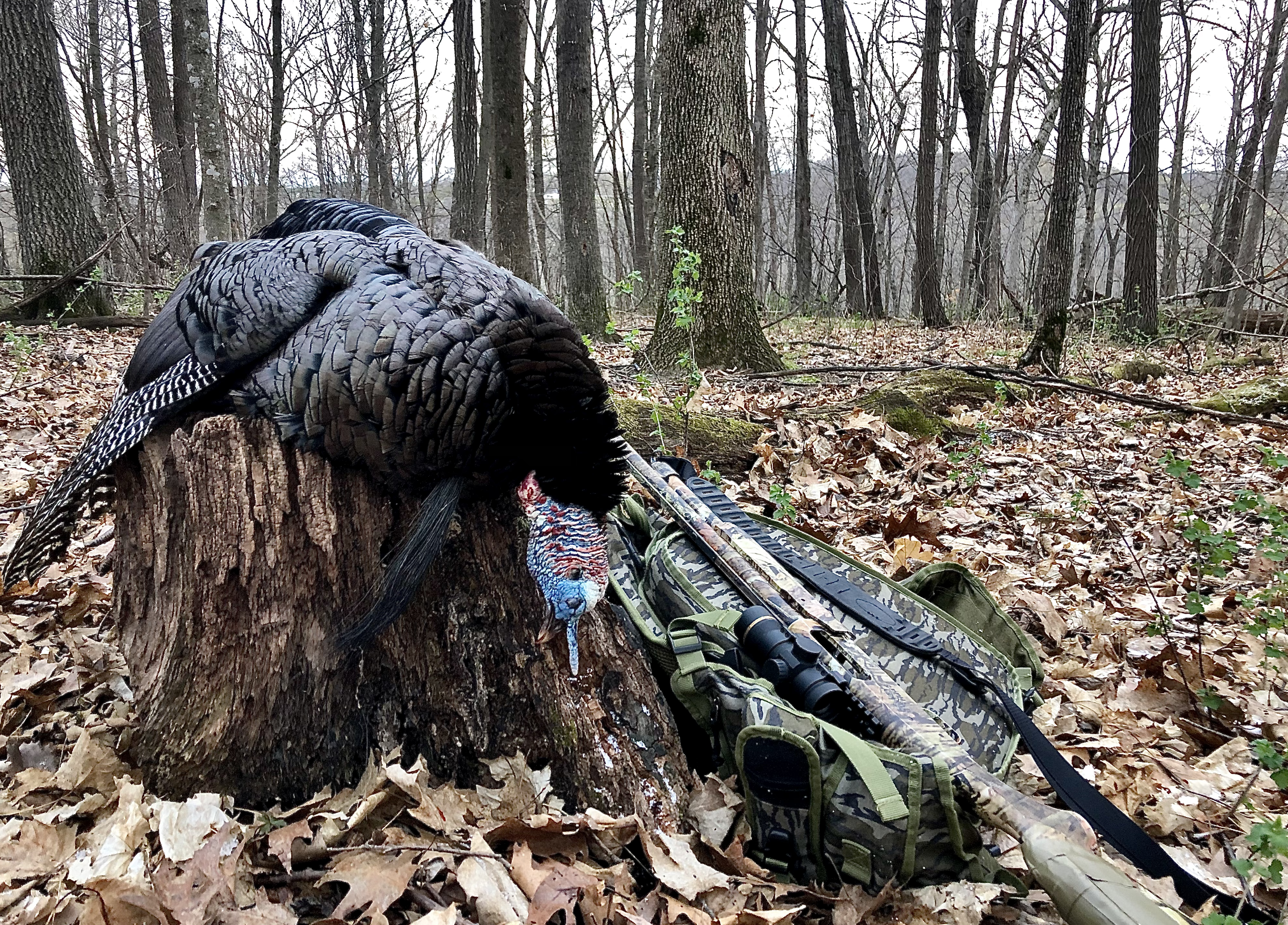
Minnesota
Subspecies: Eastern
Estimated population: Not available
Spring 2021 harvest: 12,070
Overall outlook: Leslie McInenly, wildlife populations and regulations manager with the Minnesota DNR, says the outlook for spring 2022 is good.
Potential spring 2022 hotspots: Forest transition zones, such as southeastern Minnesota and the Twin Cities metro region, are typically productive areas.
Quick tip: McInenly adds that the DNR is in the third year of evaluating changes to its permitting system. Most of state is over-the-counter, except for a few wildlife management areas.
Season dates and bag limits available here.
Mississippi
Subspecies: Eastern
Estimated population: 200,000 to 300,000
Spring 2021 harvest: About 21,700 birds
Overall outlook: Adam B. Butler, wild turkey program coordinator with the Mississippi Department of Wildlife, Fisheries and Parks, says prospects for the spring 2022 season are a bit tougher to decipher than usual.
“The 2021 season was a very strange year, probably due to many factors, not the least of which was the once-in-a-century ice storm, which had an extended grip on our state just a couple of weeks in advance of the spring season,” he says. “This undoubtedly delayed breeding activity and probably was a significant contributing factor to the disappointing 2021 season most hunters experienced.”
The state’s spring gobbler hunting survey indicated that the number of gobblers heard (3.7 per 10 hours hunted) and harvest per unit effort (2.3 gobblers taken per 100 hours hunted) were the lowest since the survey’s inception in 1995. Still, the number of turkeys hunters observed increased slightly, suggesting that birds were unusually tight-lipped during the season, and hunter frustration was not necessarily because of a lower population. Jake observations were at their 10-year average, which was an improvement from 2020. Summer gobbler sightings dropped, however, suggesting less-than-stellar gobbler carryover.
“Overall, the crystal ball is a mixed bag, but my guess is this coming season [will] be better than last year,” says Butler, “but will still only be average at best for most folks.”
Potential spring 2022 hotspots: Private lands along the Mississippi River seem poised for a good 2022 if the river doesn’t flood, says Butler. Those areas had a strong hatch in 2020 (3.2 poults per hen), which caused a large increase in jake observations during spring 2021.
Southeastern Mississippi has also been trending slowly upward the previous few years thanks to three solid hatches in the past four years. The northern and southwestern portions of the state will probably be below average because of poor hatches the past few years.
Quick tip: Butler said nonresidents planning to hunt public land the first two weeks of Mississippi’s regular season should know the rules have changed. Nonresident hunters must have a unique license endorsement that can only be obtained via a special draw. The application period runs Jan. 15 through Feb.15. The requirement does not apply to nonresidents hunting private land or nonresidents hunting public lands after March 28.
Season dates and bag limits available here.
Missouri
Subspecies: Eastern
Estimated population: About 350,000 birds
Spring 2021 harvest: 34,595
Overall outlook: “This spring turkey season is likely to be about as challenging as the past few spring turkey hunting seasons in Missouri,” says Reina Tyl, wild turkey and ruffed grouse biologist with the Missouri Department of Conservation. “Turkey abundance across much of the state is at a lower level than 5 to 10 years ago due to relatively poor production in recent years. However, hunters that put in the time to scout, are persistent and are willing to adapt their hunting strategies to the behavior of the birds in their area should still have plenty of opportunity for success.”
Potential spring 2022 hotspots: Tyl adds that 2020 productivity varied across the state, with the best production occurring in northern Missouri and counties that border the Missouri River in the eastern part of the state. Those areas might have more 2-year-old gobblers compared to the past few years, which could improve hunting during spring 2022.
Quick tip: Hunters can locate potentially productive public areas here.
Season dates and bag limits available here.
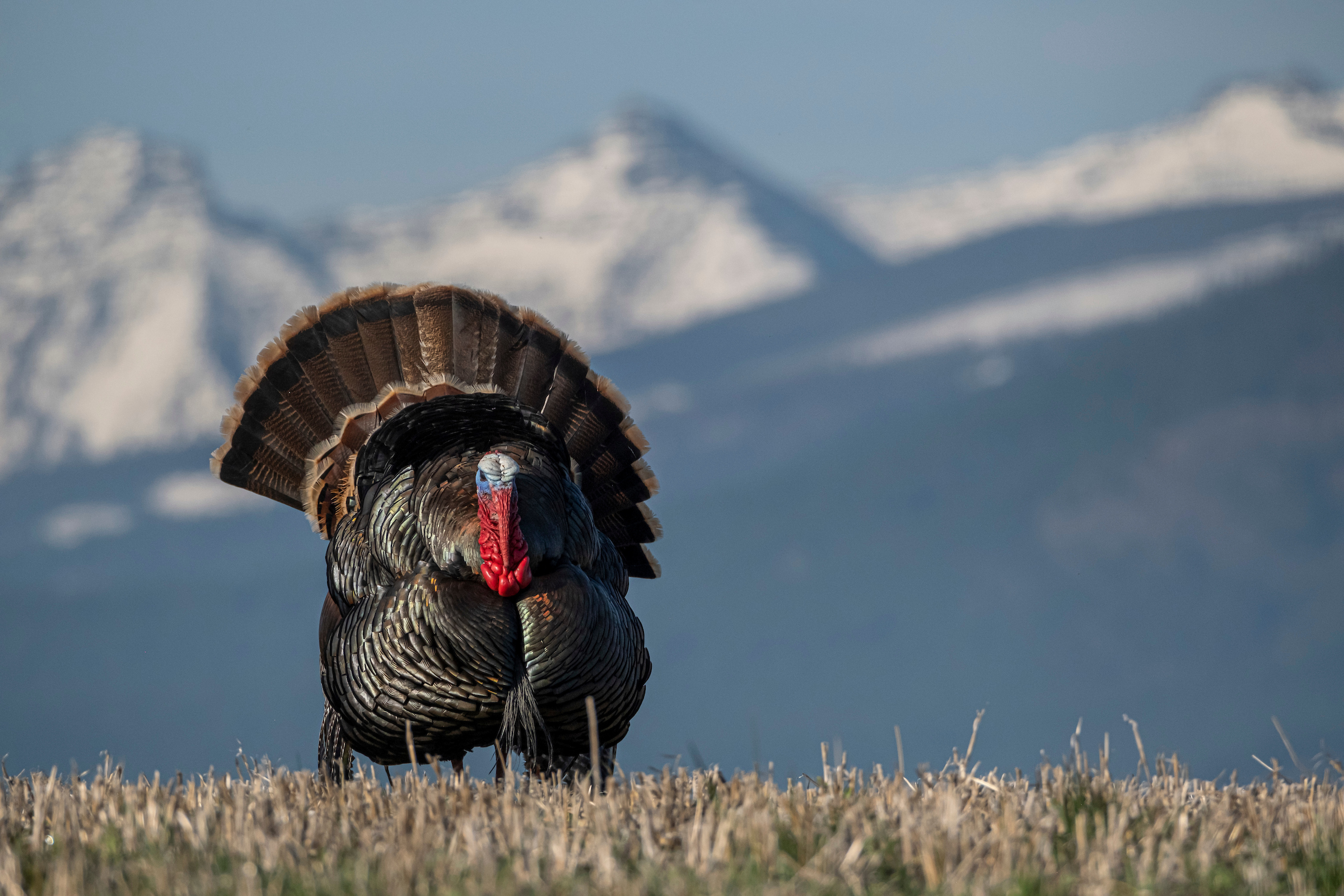
Montana
Subspecies: MostlyMerriam’s but some Easterns and hybrids in northwestern Montana
Estimated population: Not available
Spring 2021 harvest: Not available
Overall outlook: Justin Hughes, upland-game-bird habitat specialist for Montana Fish Wildlife & Parks in Region 7, says turkey numbers across southeastern Montana have been fairly stable considering the drought that has gripped the area for the past two years. Habitat conditions outside of main river corridors in the region are poor, which might affect turkey distribution, especially in marginal habitat, until the region receives significant rainfall.
Potential spring 2022 hotspots: “Look for riparian areas that provide adequate roosting and nesting areas containing residual cover this spring,” says Hughes. “Residual cover is sparse on the landscape and will provide birds with early spring nesting and foraging cover. Turkeys prefer the grocery store as close to the bedroom as they can get it. Hunters who can find areas of highest quality available habitat will be most successful.”
Quick tip: “Turkeys in the West are able to put on many miles in a day. Hunters who can do the same will be most successful.”
Season dates and bag limits available here.
Nebraska
Subspecies: Merriam’s, Rio Grandes, Easterns and hybrids of those subspecies
Estimated population: Not available
Spring 2021 harvest: 20,782
Overall outlook: “Turkey populations are definitely down from highs in the mid- to late 2000s,” says Luke Meduna, big-game program manager at the Nebraska Game and Parks Commission. “There are still good turkey numbers, but they aren’t what they were 10 years ago.”
Potential spring 2022 hotspots: Meduna said many areas of the state have declined in recent years, especially southwestern Nebraska.
Quick tip: “Watch the weather,” says Meduna. “Spring weather in Nebraska can be highly variable, especially the farther west you go. Rain, snow, wind, frost and 80-degree temps make for a normal April weekend in Nebraska.”
Season dates and bag limits available here.
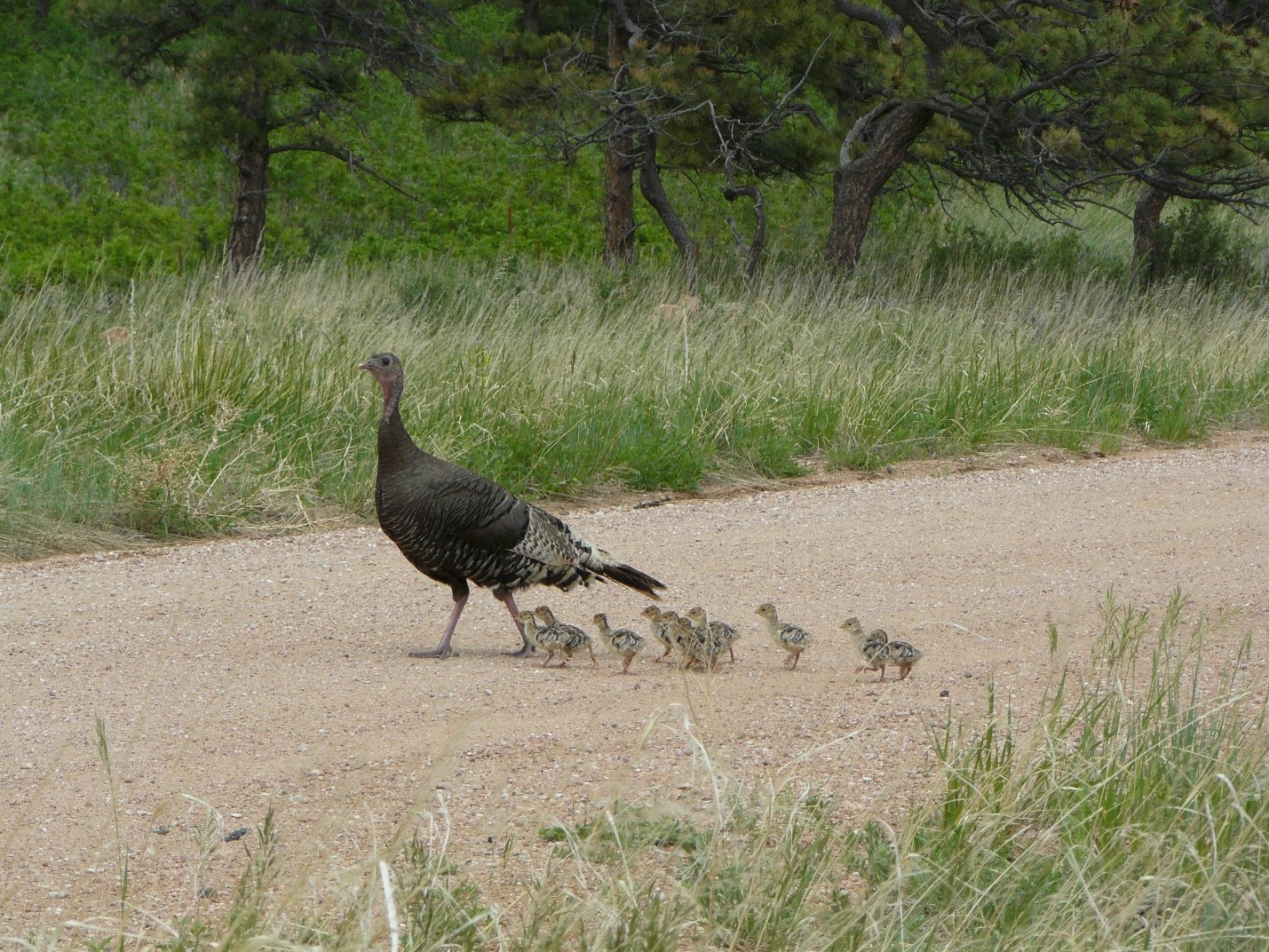
Nevada
Subspecies: Rio Grande, Merriam’s
Estimated population: Not available
Spring 2021 harvest: Harvest success in Nevada was 54 percent during spring 2021. Of 131 tag questionnaires returned, 63 hunters reported harvesting a turkey, with 56 of those being mature gobblers.
Overall outlook: Shawn Espinosa, upland game staff specialist with the Nevada Department of Wildlife, says some hunting units will continue to provide limited but quality opportunities for turkeys, but other units will be only marginal. Drought conditions persisted from Summer 2019 through 2021, with damaging effects to all plant communities and wildlife in the state.
Potential spring 2022 hotspots: Despite drought, turkey hunting in eastern Lincoln County, in southeastern Nevada, will provide some quality opportunities in 2022, says Espinosa. Other units in the eastern portion of the state, such as Hunt Unit 115, suffered from a heavy winter conditions during 2018-2019, followed by extreme drought. Turkey hunting opportunities will be extremely limited for Unit 115 in 2022. Farther north, success in hunt units in Elko County should be similar to 2021. In western Nevada, the Mason Valley Wildlife Management Area has suffered from extreme drought conditions and changes in agricultural practices surrounding the management area. In Humboldt County, Paradise Valley will provide some limited but good opportunities, as drought there hasn’t been as bad. Southern Nevada turkey populations in Clark County have been negatively affected by suburban development. Despite that and other habitat issues, hunter success and the abundance of mature gobblers has been well above average. Overton Wildlife Management Area continues to provide good turkey hunting opportunities in the Moapa Valley area, even though many agricultural lands surrounding the area are being developed.
Quick tip: “Nevada turkey hunting is very limited in terms of opportunity,” Espinosa adds. “There just is not enough suitable turkey habitat to sustain populations in high numbers across the state. Be prepared to be patient and build bonus points over a period of several years for a quality turkey hunting experience.”
Season dates and bag limits available here.
New Hampshire
Subspecies: Eastern
Estimated population: More than 40,000 birds
Spring 2021 harvest: Not available
Overall outlook: “New Hampshire offers excellent opportunities for hunting wild turkey,” says the New Hampshire Fish and Game website.
Potential spring 2022 hotspots: The state has hundreds of state forests and wildlife management areas open to public hunting, plus dozens of parks and other tracts where hunters can roam.
Quick tip: Hunters can find more info here.
Season dates and bag limits available here.
New Jersey
Subspecies: Eastern
Estimated population: 20,000
Spring 2021 harvest: 2,327
Overall outlook: Jimmy Sloan, upland game-bird biologist for the New Jersey Department of Environmental Protection’s Division of Fish and Wildlife, says the dry spring 2021 allowed for good poult productivity. Further, a bumper crop of hard and soft mast let young and adult turkeys enter winter in great condition, so spring 2022 should produce excellent hunting opportunities.
Potential spring 2022 hotspots: “Southern New Jersey provides some of the finest spring turkey hunting in the Mid-Atlantic region,” says Sloan. “Recent population and harvest trends point to a decline in the northern portions of the state.”
Quick tip: “Mid- to late-season hunting opportunities are sometimes overlooked,” adds Sloan. “This is an excellent time to find a tom that is expanding its range to find another mate, especially as some hens begin to incubate.
Season dates and bag limits available here.
New Mexico
Subspecies: Merriam’s, Rio Grande, Gould’s (special hunt only)
Estimated population: 20,000 to 30,000
Spring 2021 harvest: Not available;2,125 birds in spring 2020
Overall outlook: “Populations may be down slightly from previous years,” says Casey Cardinal, resident game-bird biologist with the New Mexico Department of Game and Fish. “Though the winter of 2020-21 was relatively mild, New Mexico also experienced difficult drought conditions last spring. Nesting efforts seemed to be reduced from previous years, and brood survival was likely lower with reduced insect and forb production.”
Potential spring 2022 hotspots: After the 2021 drought, there might not be any areas that are particularly promising, says Cardinal. However, turkey populations tend to remain relatively stable in the Smoky Bear and Sacramento ranger districts in the Lincoln National Forest and Gila National Forest.
Quick tip: “Turkeys need to use free-standing water in the Western states, so look for areas that may have small streams or tanks,” adds Cardinal. “Food sources—new grass, acorns, pinon nuts, juniper berries and insects—and roost sites (typically Ponderosa pines) near these areas may give you the best chance for a turkey in New Mexico.”
Season dates and bag limits available here.
New York
Subspecies: Eastern
Estimated population: 170,000
Spring 2021 harvest: 16,891
Overall outlook: Michael Schiavone, game management section head with the New York State Department of Environmental Conservation, says improved reproductive success in 2020 is expected to result in a Spring 2022 harvest that’s higher than 2021. However, that will still be tempered by poor production two of the past three years.
Potential spring 2022 hotspots: Schiavone says DEC regions 4 (Capital Region) and 9 (western New York) had above-average production in 2020, and Region 9 had good production the past two summers. He anticipated those areas will hold more birds than portions of central New York, where reproductive success was lower.
Quick tip: “If you tend to head back home by 9 a.m. or so, consider staying afield until noon,” adds Schiavone. “Hens will often head off on their own to sit on a nest, particularly as the season progresses, so gobblers are left alone and are vulnerable to a hunter’s calls.”
Season dates and bag limits available here.
North Carolina
Subspecies: Eastern
Estimated population: 270,000
Spring 2021 harvest: 21,974
Overall outlook: “I’m generally an optimist, so to look on the bright side, we have turkeys in every county of the state, several million acres of public game lands and a well-timed hunting season that offers great opportunity for hunters to get a afield for turkeys,” says Christopher Kreh, assistant chief of the game and furbearer program with the North Carolina Wildlife Resources Commission. “However, as somewhat of a reality check, our brood survey during the summer of 2020 suggested that reproduction that year was one of the worst on record. And since the bulk of our turkey harvest generally comes from 2-year-old birds, it’s likely that hunters may not hear or encounter as many gobblers as normal. Another way to say this is: The lack of birds hatched and raised in 2020 will likely lead to fewer 2-year-old birds available to hunters in the 2022 spring season.”
Potential spring 2022 hotspots: Kreh says surveys and harvest monitoring continue to indicate that eastern North Carolina has the most robust turkey populations. The Piedmont and mountain regions also offer good hunting, but those areas have not been as productive in recent years.
Quick tip: Kreh adds hunters might want to check out special opportunities on some game lands that are only available through a permit system. The deadline to apply for permits is March 1. Details can be found here.
Season dates and bag limits available here.
North Dakota
Subspecies: Eastern, Merriam’s
Estimated population: Not available
Spring 2021 harvest: 2,268
Overall outlook: Rodney Gross Jr., upland game biologist with the North Dakota Game and Fish Department, says prospects for 2022 will depend on how harsh the winter is, but he’s cautiously optimistic because turkey numbers in the state have been steady.
Potential spring 2022 hotspots: Areas west of the Missouri River are best, adds Gross.
Quick tip: Turkey hunting is only open to North Dakota residents. However, nonresidents can find opportunities at some tribal lands.
Season dates and bag limits available here.
Ohio
Subspecies: Eastern
Estimated population: 150,000
Spring 2021 harvest: 14,541
Overall outlook: Mark Wiley, forest game-bird biologist with the Ohio Department of Natural Resources’ Division of Wildlife, says Ohio experienced a dip in turkey numbers during recent years. The Spring 2021 harvest decreased to 14,541 after exceeding 22,600 in 2018.
“The state’s most reliable predictor of future trends in spring harvest is the annual poult index,” which reflects poults per hen, says Wiley. “Ohio had poor poult numbers during 2017 through 2019, which likely explains the low spring harvest in subsequent years. Fortunately, poult numbers returned to the long-term average in the summer of 2020 and were well above average in 2021. These indices suggest Ohio’s spring turkey hunters will encounter an improved class of mature gobblers and a strong class of jakes during spring 2022.”
Potential spring 2022 hotspots: “The harvest patterns and poult indices show no strong evidence of regional variability in recent years,” adds Wiley. “Poult numbers improved uniformly across the state during 2020 and 2021. In general, wild turkey numbers are stronger in eastern and southern counties than other parts of the state. This regional disparity is a product of habitat availability and is apparent in the spring harvest totals.”
Quick tip: Hunters are limited to one gobbler in spring 2022.
Season dates and bag limits available here.
Oklahoma
Subspecies: Rio Grande, Eastern
Estimated population: Not available
Spring 2021 harvest: Not available, but lower than the five-year average
Overall outlook: Eric Suttles, Southeast Region wildlife supervisor and co-turkey project leader with the Oklahoma Department of Wildlife Conservation, says the outlook is better than the past few years, and reports of good poult production has biologists optimistic.
Potential spring 2022 hotspots: “The southwestern region of Oklahoma will continue to experience lower-than-normal turkey numbers,” says Suttles. “Other parts of the state should expect normal to slightly improved numbers.”
Quick tip: Suttles reminds hunters that Oklahoma has a reduced bag limit (one gobbler) and a later spring season for 2022, in response to declining populations.
“We’ve also started two turkey research projects that Oklahoma State University will lead,” he adds. “The first is a genetic study that will provide information of population isolation and disconnectivity throughout the state. The second is a poult production and poult survival study to better understand reproduction efforts by hen turkeys in Oklahoma. We are optimistic that our regulation change and research will help provide the needs for turkeys and improve our population throughout the state.”
Season dates and bag limits available here.
Oregon
Subspecies: Primarily Rio Grande, some Rio/Merriam’s hybrids
Estimated population: About 45,000
Spring 2021 harvest: Not available
Overall outlook: Mikal Cline, upland game-bird coordinator for the Oregon Department of Fish and Wildlife, says prospects for spring 2022 are excellent, assuming turkeys have good overwinter survival. Oregon has few limiting factors for turkeys.
Potential spring 2022 hotspots: “Southwestern Oregon, including the Medford and Roseburg areas, is the traditional hotspot in the state,” says Cline. “Populations are beginning to build up west of Klamath Falls due to trap-and-transplant efforts. The John Day area in central Oregon has been the subject of some population reduction efforts due to agricultural damage, but hunters should still be able to find plenty of birds. Northeastern Oregon’s Blue Mountains offer the best public-land opportunity in the state.”
Quick tip: “Oregon’s public-land turkeys are widespread but may take a couple of days to locate, so start early and work the snow line if you can.”
Season dates and bag limits available here.
Pennsylvania
Subspecies: Eastern
Estimated population: more than 160,000
Spring 2021 harvest: 28,087
Overall outlook: “In areas of the state (that experienced) the 20-year cicada hatch in 2021, there will be an abundance of jakes this spring,” say Mary Jo Casalena, wild turkey biologist with the Pennsylvania Game Commission. “That could be good for seeing more turkeys. However, most hunters let jakes walk to have them around the following spring, when they are more boisterous with gobbling — sometimes all day long.
“Prospects will vary widely across the state, as I believe hunting satisfaction and success are quite dependent on the male age ratio of the local population, as that is one large factor in the amount of gobbling heard.”
Potential spring 2022 hotspots: In 2020, recruitment was lower than average in wildlife management units 1A, 2A, 2B, 2C, 2D, 2F, 3D, 5B and 5C but average to above average in 14 other WMUs, Casalena said. Promising units might include WMUs 1B, 2E, 3A, 3B, 4C, 4D, 2G and 4A, but those areas will have lots of jakes.
Quick tip: “Scout different areas and areas you haven’t gone to before,” Casalena said. “You might be surprised. Local populations within each WMU will vary, as gobbling is very dependent on the age ratio of the gobbler population and hen density.”
Season dates and bag limits available here.
Rhode Island
Subspecies: Eastern
Estimated population: Not available, but stable for the past 10 years
Spring 2021 harvest: 282
Overall outlook: “The 2022 spring turkey season in Rhode Island should be good,” says Alexander Fish, upland game-bird biologist with the Rhode Island Department of Environmental Management’s Division of Fish and Wildlife. “The 2019 through 2021 spring turkey seasons had high harvests, and 2022 is expected to be similar.”
Potential spring 2022 hotspots: Fish says turkey populations across the state appear to be stable. Urban or suburban areas hold good numbers of turkeys, and hunters who locate legal hunting areas near those areas typically have good success.”
Quick tip: “Turkey populations in Rhode Island are stable, but a relatively large proportion of the state is urbanized, and many rural areas are experiencing increased housing development. Scouting to locate turkeys and securing permission to hunt on private property are the best ways to increase hunting success.”
Season dates and bag limits available here.
South Carolina
Subspecies: Eastern
Estimated population: 100,000
Spring 2021 harvest: 14,065
Overall outlook: Charles Ruth, big-game program coordinator for the South Carolina Department of Natural Resources, said prospects for spring 2022 are only fair, considering the continuing trend of less-than-desirable poult recruitment.
Potential spring 2022 hotspots: Ruth says hunters should check out the Webb Wildlife Center Complex in Hampton County, in the coastal plain, and the Sumter National Forest, which extends into several counties in the Piedmont.
Quick tip: “Research in South Carolina indicates that the natural peak in gobbling is around the end of the first week in April.”
Season dates and bag limits available here.
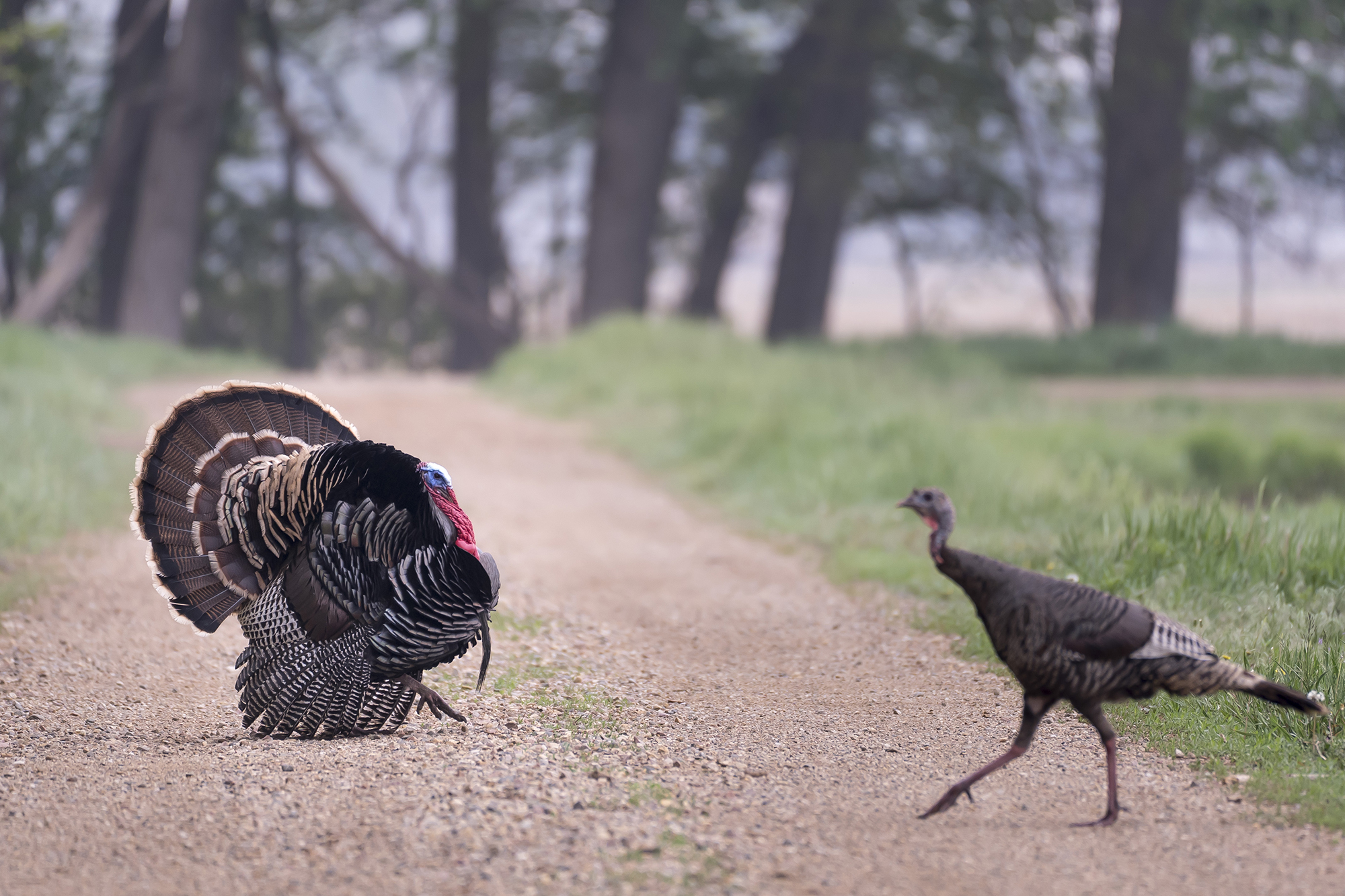
South Dakota
Subspecies: Primarily Easterns east of the Missouri River and primarily Merriam’s west of the river
Estimated population: Not available
Spring 2021 harvest: Not available
Overall outlook: Chad P. Lehman, senior wildlife biologist with South Dakota Game, Fish and Parks, says turkeys experienced excellent reproduction in 2021, but biologists were waiting to see weather data corresponded to winter mortality.
Potential Spring 2022 hotspots: “Statewide, it’s looking great, as we had excellent weather conditions over spring and summer for reproduction,” says Lehman.
Quick tip: “It’s open country, and good glassing equipment is important.”
Season dates and bag limits available here.
Tennessee
Subspecies: Eastern
Estimated population: Not available
Spring 2021 harvest: estimated 53,669
Overall outlook: “Based on the very poor levels of production seen across the state in 2020, I expect fewer 2-year-olds on the landscape than in past years and, consequently, harvest to be down from our five-year average numbers,” says Roger Shields, wild turkey program coordinator with the Tennessee Wildlife Resources Agency.
Potential spring 2022 hotspots: Shields reports that reproduction in Region 1 (western Tennessee) has been down for several consecutive years, so harvest will likely be down there more than elsewhere. Region 3 has consistently led the state in annual reproduction, so harvest numbers should be strongest in that region and Region 2, which always has plenty of birds.
Quick tip: “Most folks are out there at the opener, but they should not give up on hunting toward the end of the season. Especially where gobblers are henned up early in the season, stay with it, and they’ll come around once the hens have moved off to nest.”
Season dates and bag limits available here.
Texas
Subspecies: Rio Grande, Eastern and Merriam’s (in the Davis Mountains)
Estimated population: 500,000
Spring 2021 harvest: 29,935
Overall outlook: Jason Hardin, turkey program leader for the Texas Parks and Wildlife Department, anticipates that hunters will encounter plenty of gobblers in areas of the state that historically support turkey populations.
Potential spring 2022 hotspots: Hardin says the Edwards Plateau (Hill Country), Cross Timbers and eastern half of southern Texas should have the best turkey numbers. Landscapes along major riparian corridors in southern Texas, and the Cross Timbers and Edwards Plateau regions should have the highest density of birds. Hunters might not find birds in those ecoregions if they’re not relatively close to waterways. Areas with large live oak mottes in the Coastal Sand Sheet, or Coastal Sand Plains, of southern Texas — which includes portions of Brooks, Hidalgo, Jim Hogg, Jim Wells, Kenedy, Kleberg and Willacy counties — can support some of the highest turkey densities and some of the lowest harvest rates and hunter effort. The Rolling Plains counties along the Oklahoma state line in the eastern Panhandle have been down the past few years. After the 2011 and 2013 droughts, turkey populations there didn’t respond as well as the rest of the Rio Grande populations in the state.
Quick tip: “Don’t get too hung up on opening day hunting, because often in Texas, the middle or even the end of the spring season will finds gobblers most receptive to calling.”
Season dates and bag limits available here.
Utah
Subspecies: Rio Grande, Merriam’s
Estimated population: 25,000 to 35,000
Spring 2021 harvest: 2,954
Overall outlook: Heather Talley, upland-game program coordinator with the Utah Division of Wildlife Resources, is optimistic for a good season in spring 2022.
Potential spring 2022 hotspots: Turkey numbers in the northeastern region are stable along major river corridors, such as the Duchesne, Green, White and their tributaries, Talley said. Those areas are largely privately owned. There is some public land river-bottom turkey habitat in the area, but easily accessible areas get lots of pressure. Turkey numbers in upland habitat on public lands have declined recently because of prolonged drought conditions.
Turkey populations in the southern region, outside of agricultural land, are down. Drought has been tough on all wildlife in the area, and many parts of the southern region had poor nesting success in 2021.
In northern Utah, hunters can find turkeys in Box Elder County on the northern side of the Raft River Mountains up Clear Creek, One Mile, Johnson and Wildcat canyons. Hunters can also find turkeys in Bear River Valley along the Bear River Corridor, and along the Wellsville Range from Deweyville to Willard and near Mantua. Turkeys can also be found in Cache County along the Wellsville Range and Bear River Range, and along major drainages south of the Idaho border. Higher densities of birds can be found above Mendon, Wellsville, Clarkston, Cove, Richmond, Hyrum, Avon and Paradise. Turkeys can also be found on public lands above Kamas in Slate Creek and Yellow Pine.
Good areas in central Utah include Payson Canyon, Spanish Fork Canyon, the Grindstone Ridge area and benches around Utah Valley. In southern Utah, hunters should look for birds in river corridor areas and adjacent habitats. Well-timed precipitation during 2021 in central Utah was good for turkey recruitment and nutrition going into winter. Good turkey numbers can be found in Payson Canyon, Hobble Creek, Diamond Fork, Salt Creek, and other locations.
Quick tip: “Typically, more turkeys are harvested between 10 a.m. and 2 p.m. than during any other time of day.”
Season dates and bag limits available here.
Vermont
Subspecies: Eastern
Estimated population: More than 45,000
Spring 2021 harvest: 5,743
Overall outlook: “Results from the public turkey brood survey, which is conducted in July and August each year, indicate that 2021 was a below-average year for brood production in the state, owing to the prolonged cold and wet weather experienced during the critical brood rearing months,” says Chris Bernier, wildlife biologist with the Vermont Fish and Wildlife Department. “Accordingly, hunters might expect to see fewer jakes on the landscape next spring. But despite the poor production, a variety of food sources were notably abundant this past fall, and winter conditions have been very mild to date, so barring any significant change in conditions, overwinter survival should be excellent again this year, and birds should be in top physical condition coming into the spring season. While there may be fewer jakes, patient and persistent hunters should have no problem finding healthy, adult birds this spring.”
Potential spring 2022 hotspots: Bernier says much of Vermont has a good mix of productive turkey habitat, with an ideal mix of fields and forests. The Connecticut River (wildlife management units M and O), White River (WMUs J1 and J2), and Lake Champlain (WMUs F1, F2 and K) valleys are traditional hotspots. Also, Vermont has abundant public land that’s widely distributed throughout the state and is open to hunting, including 134,000 acres of wildlife management areas, which are good bets for finding turkeys. A list and description of public lands can be found here.
Quick tip: “Hunters should expect to find adult birds in the oak woods, where leftover acorns may still be prevalent.”
Season dates and bag limits available here.
Virginia
Subspecies: Eastern
Estimated population: Not available, but stable
Spring 2021 harvest: 20,541
Overall outlook: Mike Dye, upland game-bird biologist with the Virginia Department of Wildlife Resources, says the long-term effects of near-record harvests in spring 2020 and 2021 are unclear, but biologists don’t anticipate significant changes to harvest rates or hunter success this spring. He expects the 2022 season will be good, although hunters should still expect to see a decrease from the high harvests of the previous two seasons.
Potential spring 2022 hotspots: “The highest harvest rates generally come from the Tidewater region in eastern Virginia,” says Dye. “Specifically, the Northern Neck counties tend to have the highest harvest rates in the commonwealth. However, the majority of this area is privately owned, so access can be limited. Southwestern Virginia also tends to have high harvest rates, and with ample public opportunities, and this region can provide some excellent hunting. There are a few areas in the Shenandoah Valley and across the Northern Piedmont where populations are below objectives, but those populations seem to be remaining fairly stable at this time.”
Quick tip: Hunters can locate potentially productive public areas here.
Season dates and bag limits available here.
Washington
Subspecies: Merriam’s, Rio Grande, and Eastern. Hunters can achieve the Washington slam by harvesting all the subspecies. See the spring regulation pamphlet for more details.
Estimated population: Not available
Spring 2021 harvest: Not available; 4,706 in spring 2020
Overall outlook: “The outlook is very good for spring 2022 turkey hunting in Washington,” says Sarah Garrison, small-game and furbearer specialist with the Washington Department of Fish and Wildlife. “The state climatologist is forecasting above-normal precipitation with below-normal temperatures this winter, so depending on the severity of these conditions, we could see some impact on turkey populations. However, statewide harvest and hunter success have seen increasing trends over the past several years, and we have no reason to expect differently for 2022.”
Potential spring 2022 hotspots: Garrison says the northeastern population management unit—roughly Ferry, Stevens, Pend Oreille, Lincoln, and Spokane counties—continues to have the highest hunter success, and that it’s increasing. About 62 percent of hunters there shot a turkey in spring 2020. The southeastern PMU boasts the next highest success rate, at 39 percent, followed by the north-central and Klickitat PMUs, which each had success rates of 36 percent.
Quick tip: Hunters can take advantage of Washington’s Private Lands Access Program to find more opportunities in areas with limited public lands:
Season dates and bag limits available here.
West Virginia
Subspecies: Eastern
Estimated population: 101,340
Spring 2021 harvest: 10,134
Overall outlook: Michael L. Peters, game-bird and small-game project leader for the West Virginia Division of Natural Resources, says turkey production was up in 2020, so he expects the spring 2022 harvest to be higher than that of 2021.
“A lot of that depends on weather and mast conditions,” he says, “but we had a decent mast year this past year, which should help with overwinter survival.”
Potential spring 2022 hotspots: Peters says all 55 West Virginia counties hold turkeys. He suggested that hunters view the state’s Big Game Bulletin to see which counties typically produce high harvests.
Quick tip: “Don’t exclude public land from your itinerary. Public lands get a bad rap. Give them a chance here in West Virginia. They’re not as overutilized as many people say they are.”
Season dates and bag limits available here.
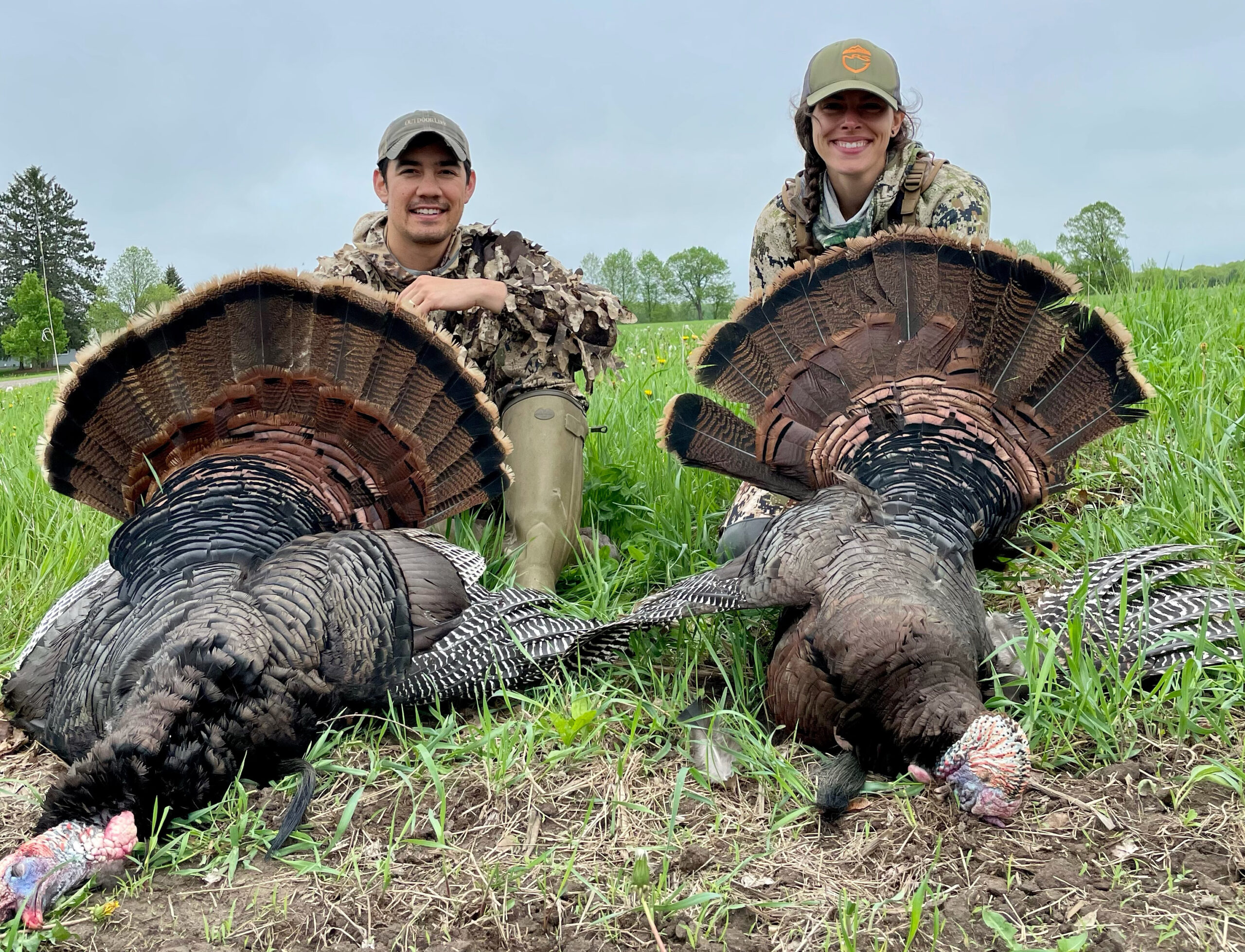
Wisconsin
Subspecies: Eastern
Estimated population: Not available
Spring 2021 harvest: 37,266
Overall outlook: “The overall outlook is very favorable so far,” sasy Alaina Gerrits, former assistant upland wildlife ecologist with the Wisconsin Department of Natural Resources. “Brooding conditions in spring and summer of 2021 were extremely favorable, and many turkey broods were observed. So far, winter has been a roller coaster. We have received significant snowfall, but it has melted very quickly. The severity of winter will provide a lot more insight on what spring will look like for us, but with the favorable brooding conditions, I still expect a very strong statewide turkey population.”
Potential spring 2022 hotspots: Gerrits says she heard reports in 2021 that hunters saw fewer birds in the southern half of the state, but hunters in the northern portion of the state continued to be impressed by increasing turkey numbers and hunting opportunities.
“I believe the reason this is happening is because in the southern half of the state, we overshot the natural carrying capacity for turkeys about 10 years ago,” she adds. “Now, the population has decreased from that level but stabilized below the carrying capacity. Most hunters who tell me they are seeing fewer birds are comparing it to five to 10 years ago. However, in some of the very northern reaches of the state, where turkeys historically did not exist, populations are still expanding and growing. This bird is a lot hardier than we expected and is faring very well in every corner of the state.”
Quick tip: “Don’t be afraid to try hunting later in the season. Even if birds are less vocal or displaying less, if you keep at it, you have a good opportunity to harvest a bird. Switch up your calling tactics, and consider being more mobile in the late season. A lot of hunters tell me it’s not worth going afield after the first or second weekend, but I completely disagree. I have harvested more birds the last weekend of season compared to any other time.”
Season dates and bag limits available here.
Wyoming
Subspecies: Merriam’s; some Rio Grandes and hybrids, depending on location
Estimated population: Not available
Spring 2021 harvest: Not available
Overall outlook: Joe Sandrini, senior wildlife biologist with the Wyoming Game and Fish Department, says prospects for spring 2022 look good to very good. After a decrease in turkey numbers after winter 2018-19, and poor poult production and survival, poult production in 2020 and 2021 was above average. Turkey numbers have subsequently increased in many areas. Populations are still lower than historic highs, but spring hunting should be fairly good in most areas.
Potential spring 2022 hotspots: Populations on private lands in Johnson and Sheridan counties (Hunt Area 3) are robust, and if hunters can secure access, hunting should be good. Private lands in the Black Hills (Area 1) and the Casper and Douglas vicinity (Area 2) also appear to be good. For public land, the Black Hills National Forest (Area 1) has improved, and the outlook is better than during the past three years. In Area 2, in the Laramie Peak area, hunters should also see improved opportunity.
Quick tip: “I would encourage hunters to plan to hunt after May 5 to 10, as that is normally when most of the hens begin to incubate, and toms become more mobile and call responsive—especially on public lands, even if gobbling has dropped off,” adds Sandrini. “In addition, the weather is much more predictable (although May snowstorms are not uncommon) and access to higher-elevation public land is better due to road conditions.”
